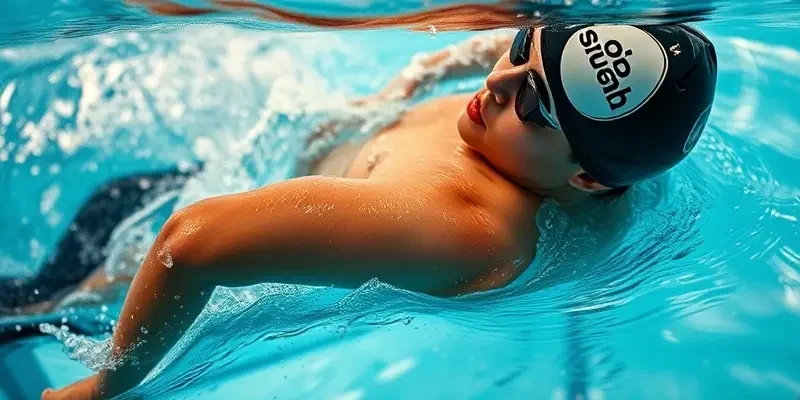Swimming is an amazing full-body workout that boosts your fitness, but there’s a catch—shoulder injuries are incredibly common. If you feel a twinge when you lift your arm or you’ve heard stories of “swimmer’s shoulder,” you’re not alone. Whether you’re a weekend warrior or a seasoned athlete, keeping your shoulders strong and healthy can be the difference between enjoying the pool and sitting on the sidelines.
In this guide, you’ll learn why swimming shoulder injuries happen, how to prevent them, smart recovery strategies, and practical tips to stay motivated. Let’s dive in!
Understanding Swimming Shoulder Injuries
Shoulders are the workhorses of every swim stroke, powering you through the water. However, repetitive overhead motion can put a lot of stress on this complex joint.
What Are the Most Common Injuries?
- Swimmer’s Shoulder: The top culprit, also known as shoulder impingement, caused by inflammation and muscle imbalances.
- Rotator Cuff Strain: Comes from overusing the small stabilizing muscles.
- Labral Tears and Instability: Less common, but more serious.
How Do They Happen?
Poor technique, overtraining, and ignoring pain are the usual suspects. Signs to watch for include pain when lifting your arm, weakness, or popping sensations. Early action matters—a stitch in time really does save nine!
Prevention Strategies for Healthy Shoulders
Want to swim farther and faster—pain-free? Prevention is your best ally.
Refine Your Stroke Technique
Sometimes, it’s not about training harder, but smarter. Even small tweaks in your arm entry or body rotation can reduce shoulder strain. Ask a coach to review your form or record yourself to spot mistakes.
Build Strength & Mobility
- Rotator Cuff and Scapular Muscles: Use resistance bands for external rotations and “Y-T-W” raises to reinforce stability.
- Flexibility Matters: Stretch your chest (pecs) and back daily. Tightness pulls your shoulders forward, increasing injury risk.
Smart Warm-Ups & Cool Downs
A dynamic warm-up—think arm circles and resistance band pulls—wakes your muscles up. After your swim, spend five minutes stretching and consider incorporating foam roller benefits to help release tight spots and improve mobility.
Prioritize Rest & Screening
Give yourself at least one rest day a week. Preseason screenings with a physical therapist can spot imbalances before they cause trouble.
Beginner-Friendly Recovery Guide
Injured? Don’t panic. Let’s break down recovery step by step.
Acute Phase: Calm the Storm
- Rest: Avoid any activity that causes pain.
- Ice and Gentle Movements: Use cold packs or gentle passive range-of-motion exercises.
- See a Specialist: If symptoms persist for more than a week, consult a physiotherapist.
Rehabilitation Phase: Restore and Build
- Strengthen: Start with light rotator cuff, scapular, and core exercises using resistance bands.
- Stretch: Focus on your chest and the back of your shoulder.
- Gradual Return: Begin with drills that minimize shoulder load—like swimming with fins.
Nutrition and Tools for Faster Healing
Your muscles rebuild outside the pool—all the more reason to fuel recovery right.
Eat for Repair
- Protein: Essential for muscle healing. Add lean meats, dairy, or plant proteins daily.
- Anti-Inflammatory Foods: Omega-3s (salmon, chia seeds), berries, and leafy greens help calm inflammation.
- Stay Hydrated: Even mild dehydration slows down recovery.
Supportive Gear and Gadgets
- Resistance Bands: Perfect for warm-ups and strengthening small stabilizers.
- Foam Rollers and Massage Balls: Help release tight spots and speed tissue recovery. Read more about the foam roller benefits for recovery and injury prevention.
- Swim Fins: Reduce arm load as you ease back into swimming.
- Cold Packs and TENS Units: Effective for early-phase pain control.
Motivation: Keeping Your Head in the Game
Recovery is as much a mental challenge as a physical one.
Smart Strategies
- Set Small Goals: Celebrate milestones—like regaining a certain range of motion or swimming your first pain-free lap.
- Visualize Success: Picture yourself moving smoothly and confidently in the water.
- Lean on Your Team: Stay connected with your coach, friends, or rehab group for motivation and accountability.
- Learn About Your Injury: Understanding your rehab plan makes setbacks less daunting.
Conclusion: Take Charge of Your Shoulder Health
With the right knowledge and strategies, swimming shoulder injuries don’t have to be your fate. Focus on prevention, respect pain signals, and commit to a structured recovery if needed. Remember: consistency trumps intensity, both in training and healing.
If your shoulder pain lingers or worsens, don’t tough it out—see a healthcare professional. Your best swim is still ahead of you!
About the Author:
As a fitness and health expert with a decade in sports training, I write for GymPulse to empower our community with practical science-backed guides. Swim smart, stay strong, and let’s keep moving forward together.

